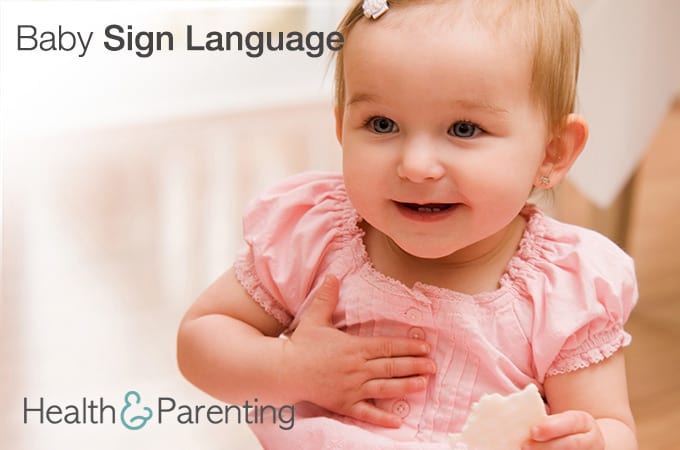After nearly a year in the baby stages, you’re probably more than ready for a better way to communicate with your little one. After all, how many times has your baby been crying and you’ve been desperate to know what he or she needs, feeling helpless for lack of an answer?
What if they could tell you? What if they could say, “Milk,” or “Hungry,” or “Cold?”
Some babies may start to develop that language very soon, while others could still be a year or more out. But with sign language, you can provide your baby with the tools to communicate their basic needs (and more) as you wait for their words to come.
More and more families are utilizing baby sign language these days, and with great results! Some stick strictly to American Sign Language (ASL) signs, while others branch out and make their own signs—the beauty is, it doesn’t matter. Just so long as you have gestures that everyone in your family (and your child’s caretakers) understand, sign language can open a door for communication that simply may not have existed at this stage otherwise.
But can baby sign language delay actual speech development? That’s one of the fears a lot of parents seem to have—that if a baby learns signs, he or she may not be as motivated to learn their words.
Fear not! Most of the research has discredited this concern, and in fact, has shown that teaching sign language in early babyhood can actually improve language comprehension later on down the line.
So how do you start? First, you should pick a few signs for words you think your child is most likely to use. “Milk” is a good one, and “food,” “more,” and “all done” are all popular as well. Kids with family dogs might also like learning to sign, “dog.”
Start with one sign to begin with, so as not to confuse your little one. “Milk,” again, is probably the simplest, because you can easily sign it before feedings. Do so with each feeding until your baby begins to make the connection. Once he or she starts signing for “milk,” you can move on to another sign. But continue to use the “milk” sign yourself as well—sign language often sticks better when it is a form of reciprocal communication.
By signing with your baby, you will be giving them an opportunity to communicate with you more effectively, eliminating frustration on both parts. And right now is the perfect time to start! Just be patient, and keep a smile on your face as you sign—your baby will be joining you in no time!
Written by Leah Campbell, infertility advocate, adoptive mama, writer and editor. Find me @sifinalaska on Twitter.
This information is not intended to replace the advice of a trained medical doctor. Health & Parenting Ltd disclaims any liability for the decisions you make based on this information, which is provided to you on a general informational basis only and not as a substitute for personalized medical advice. All contents copyright Health & Parenting Ltd 2016. All rights reserved.










